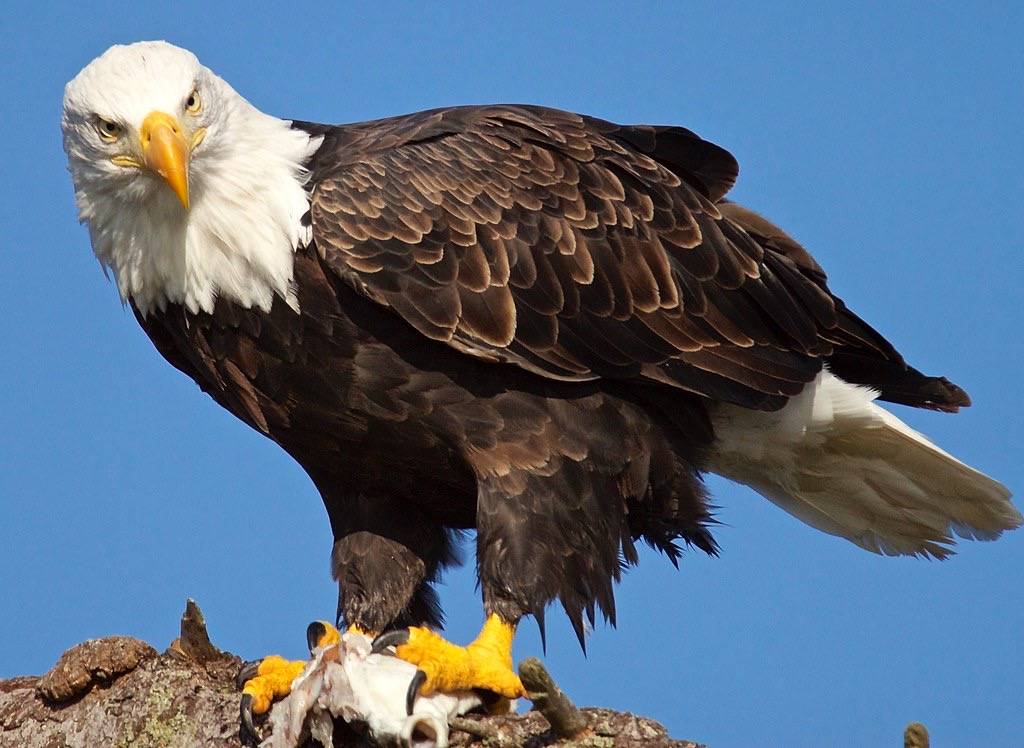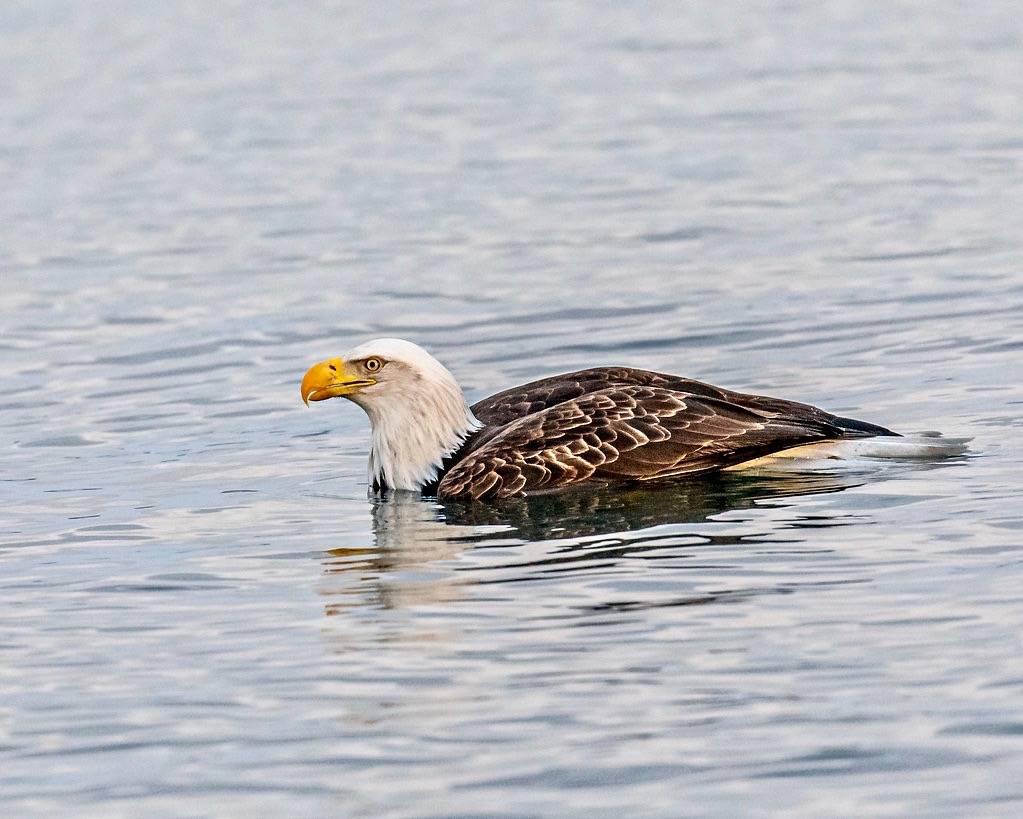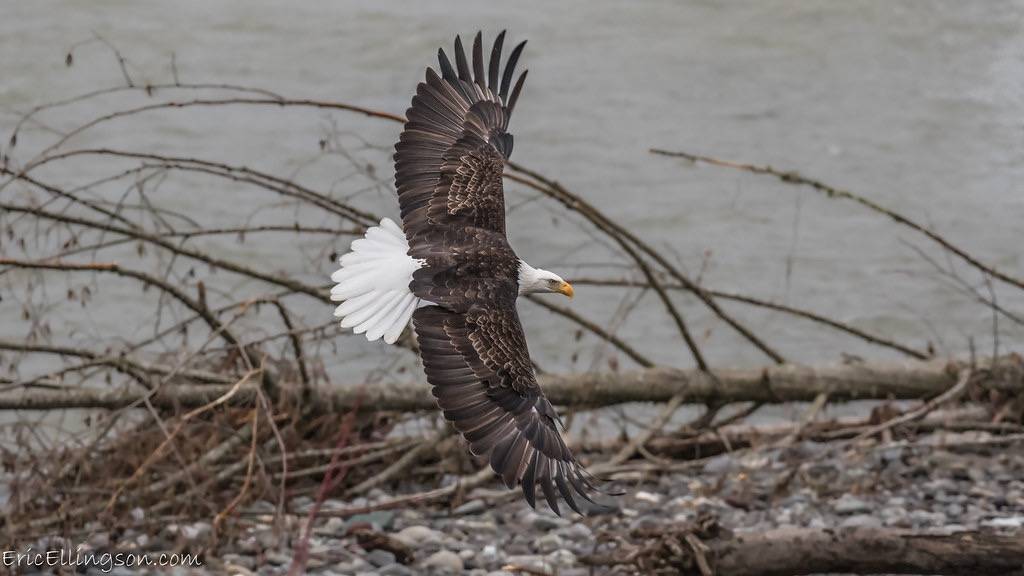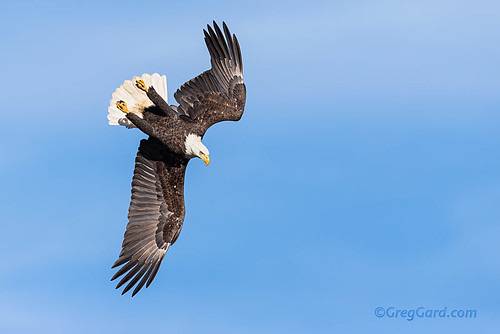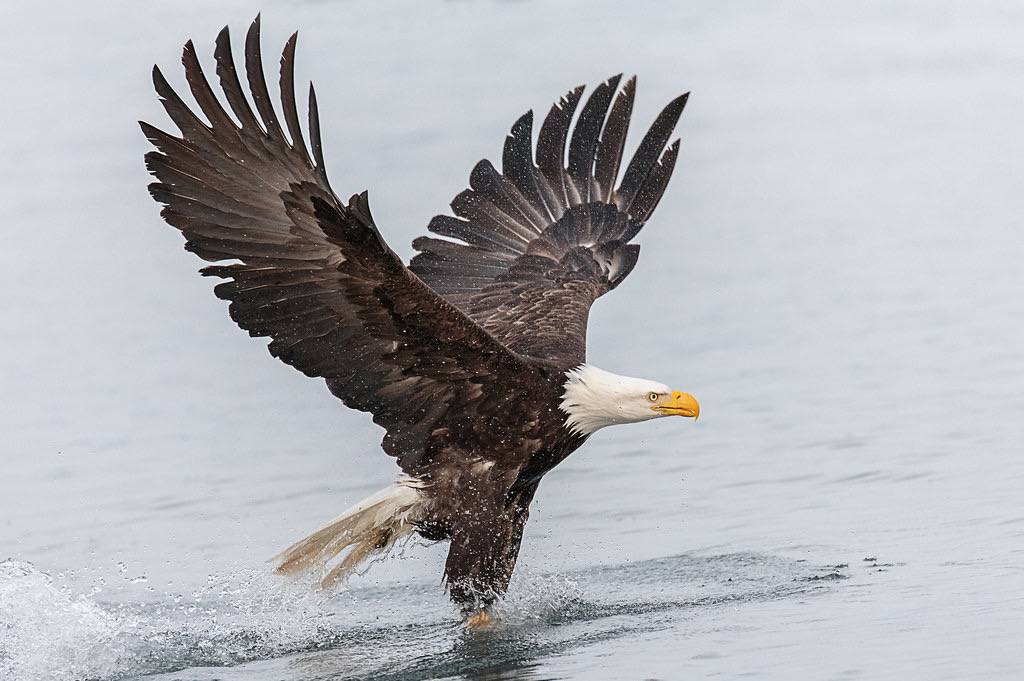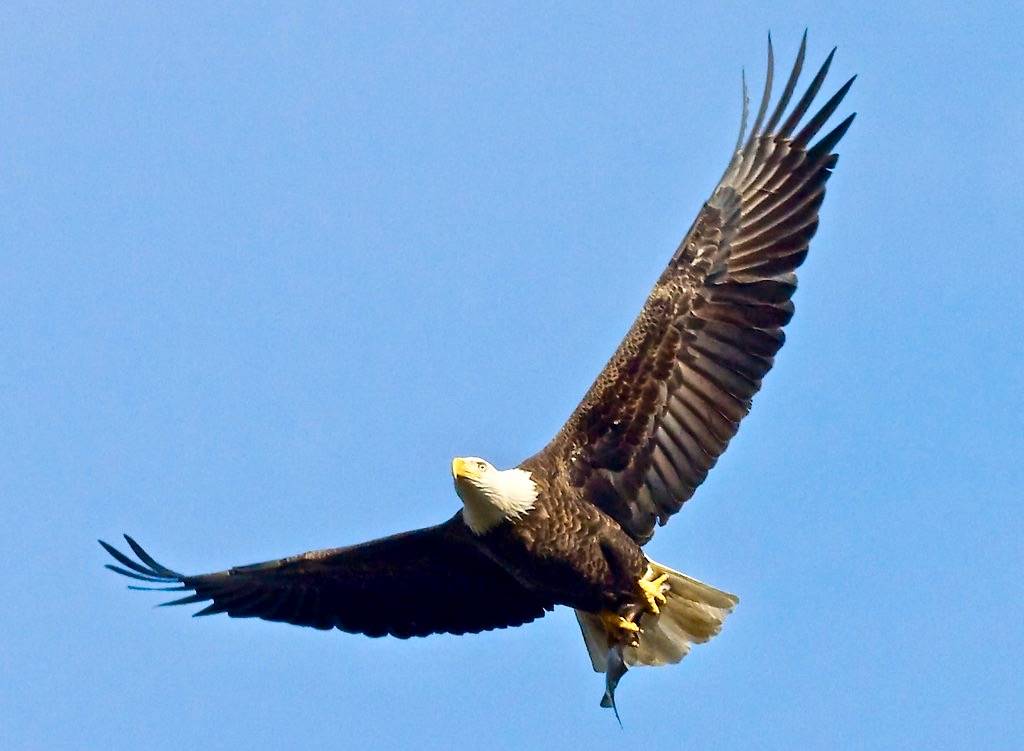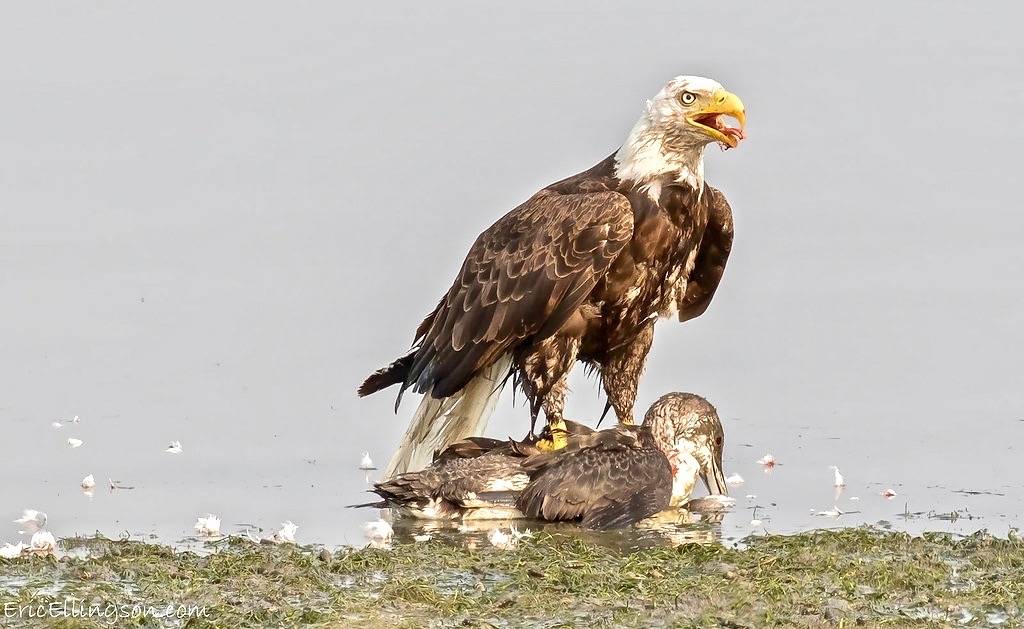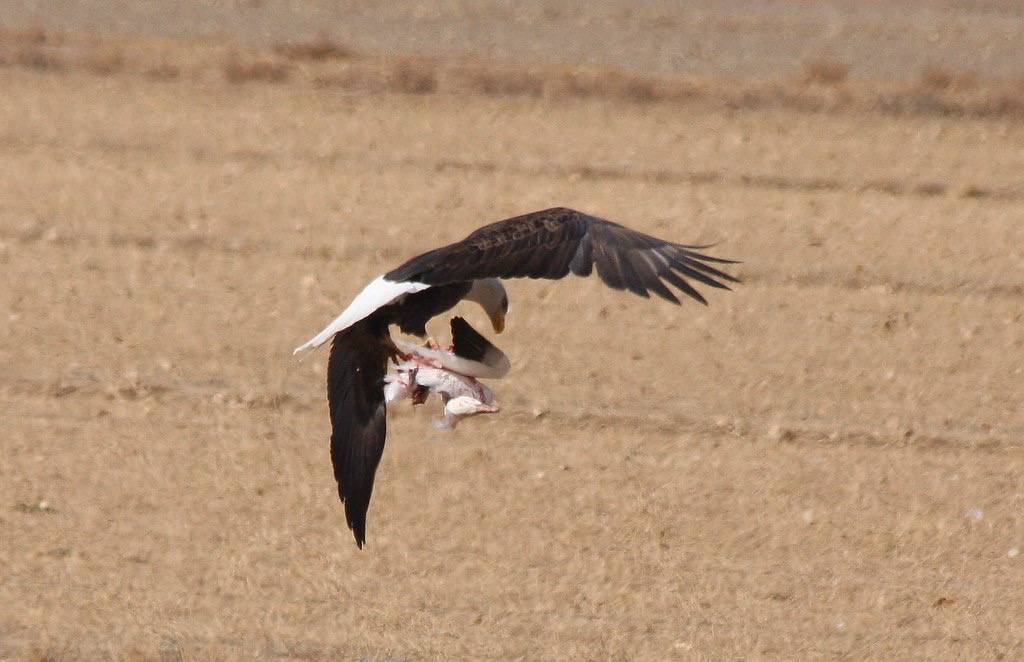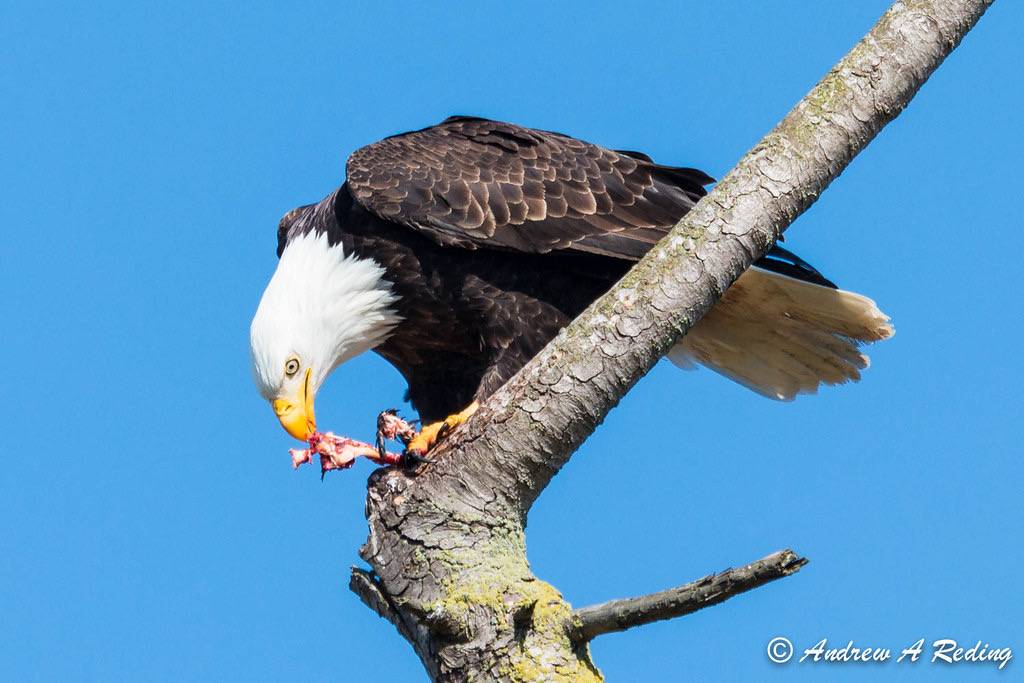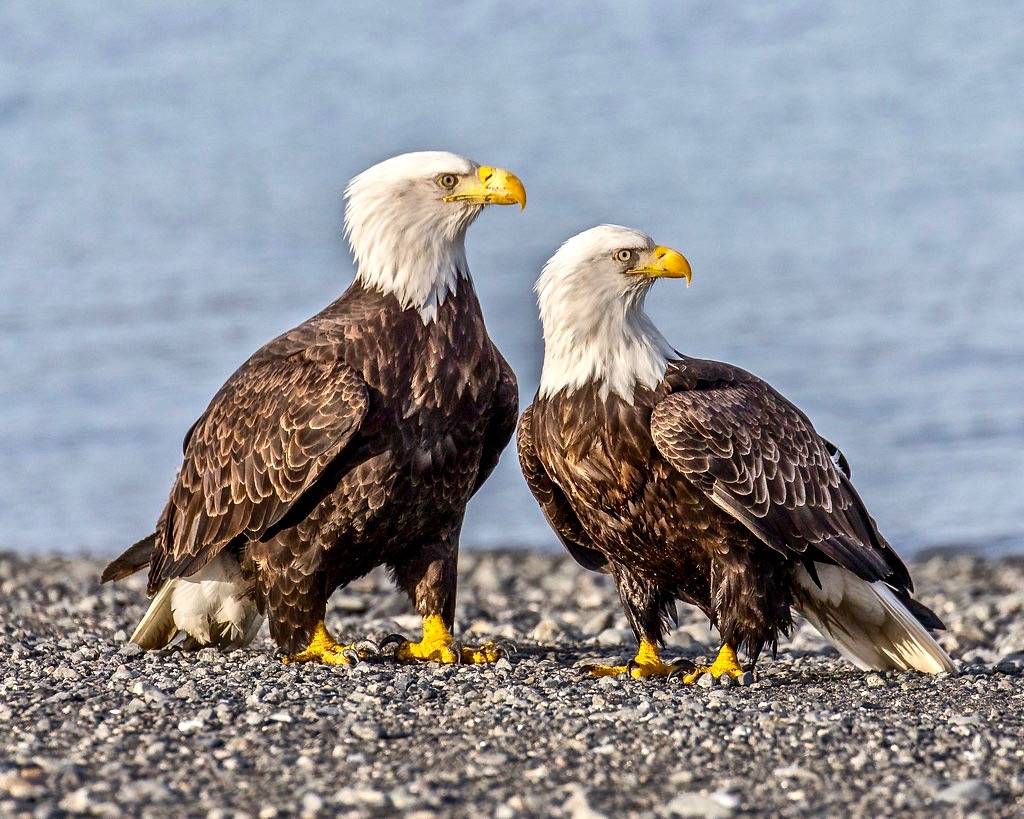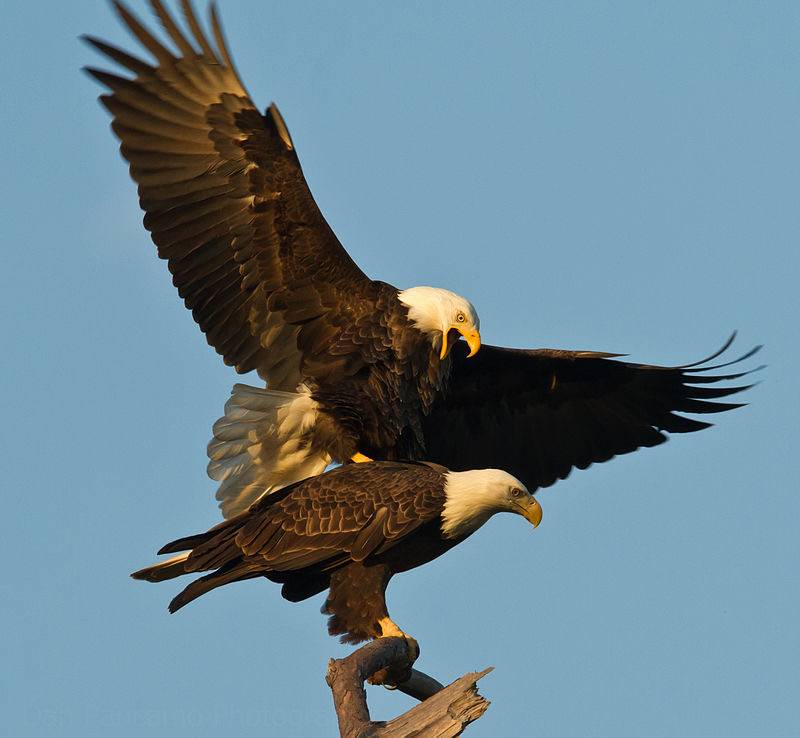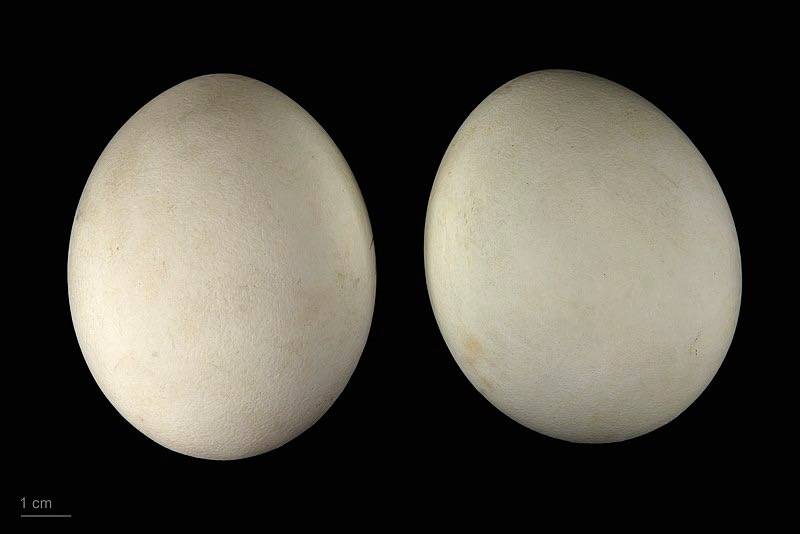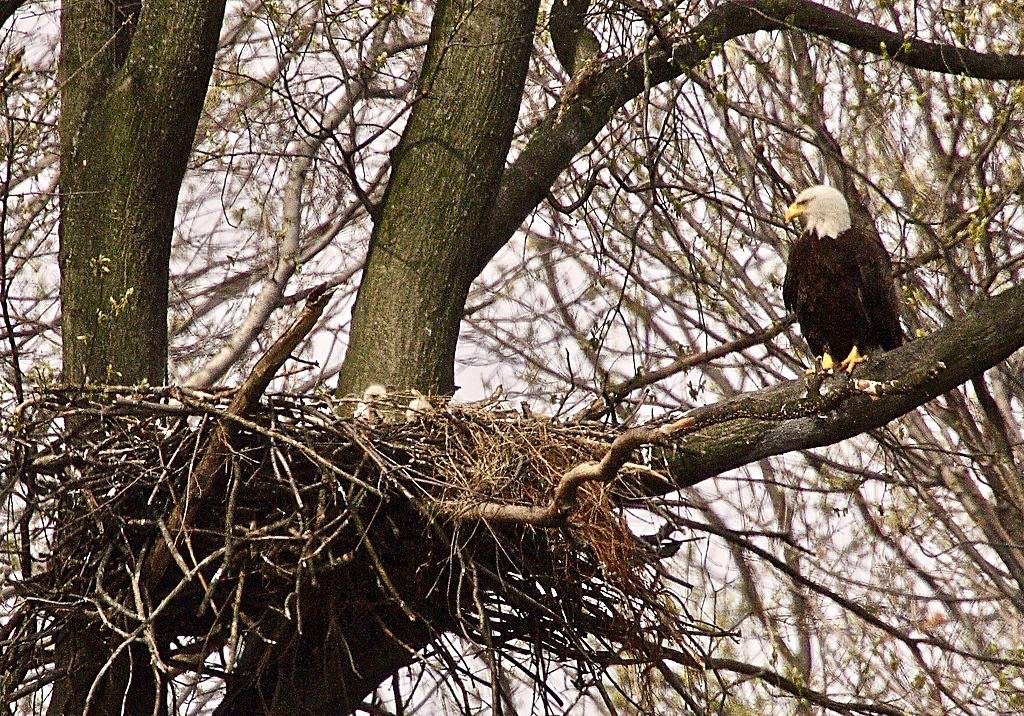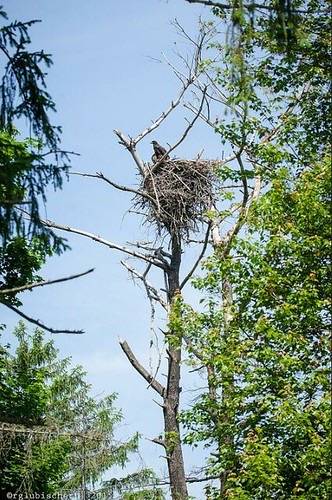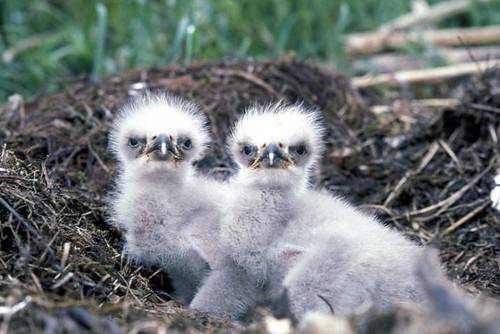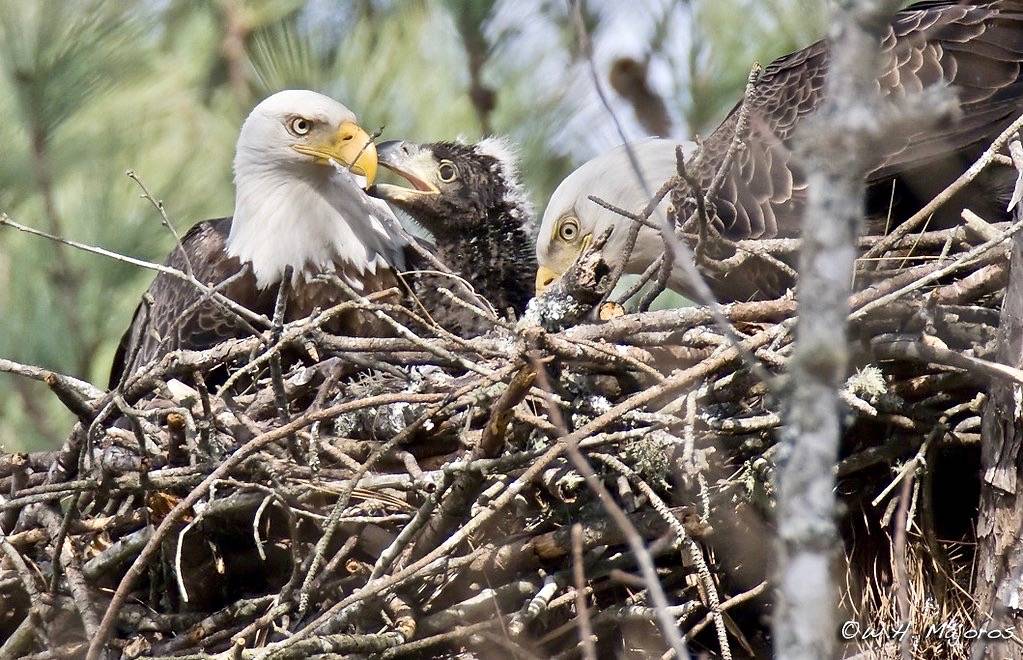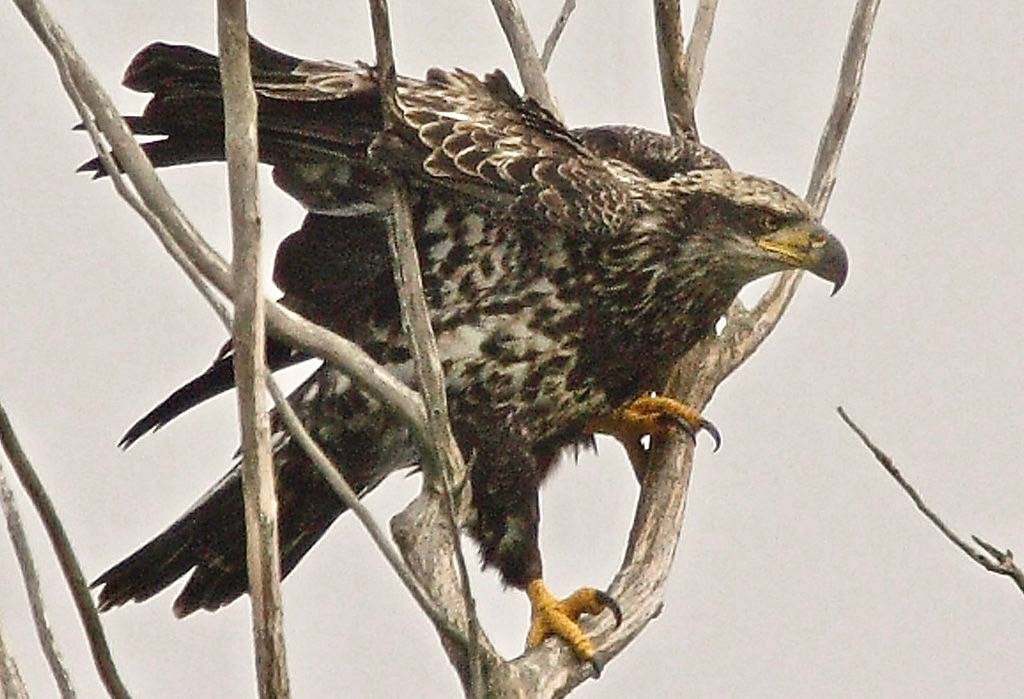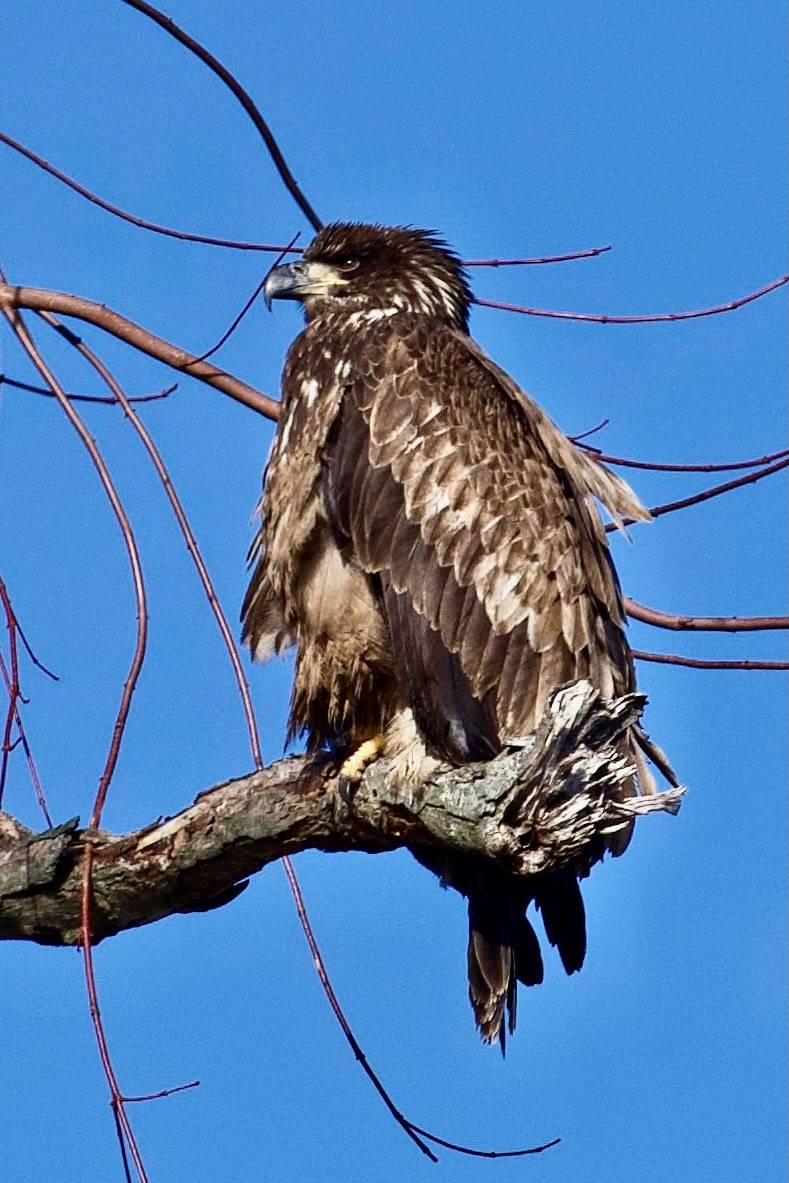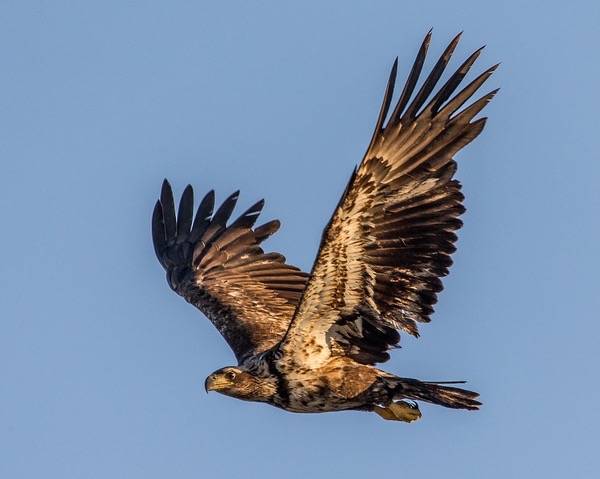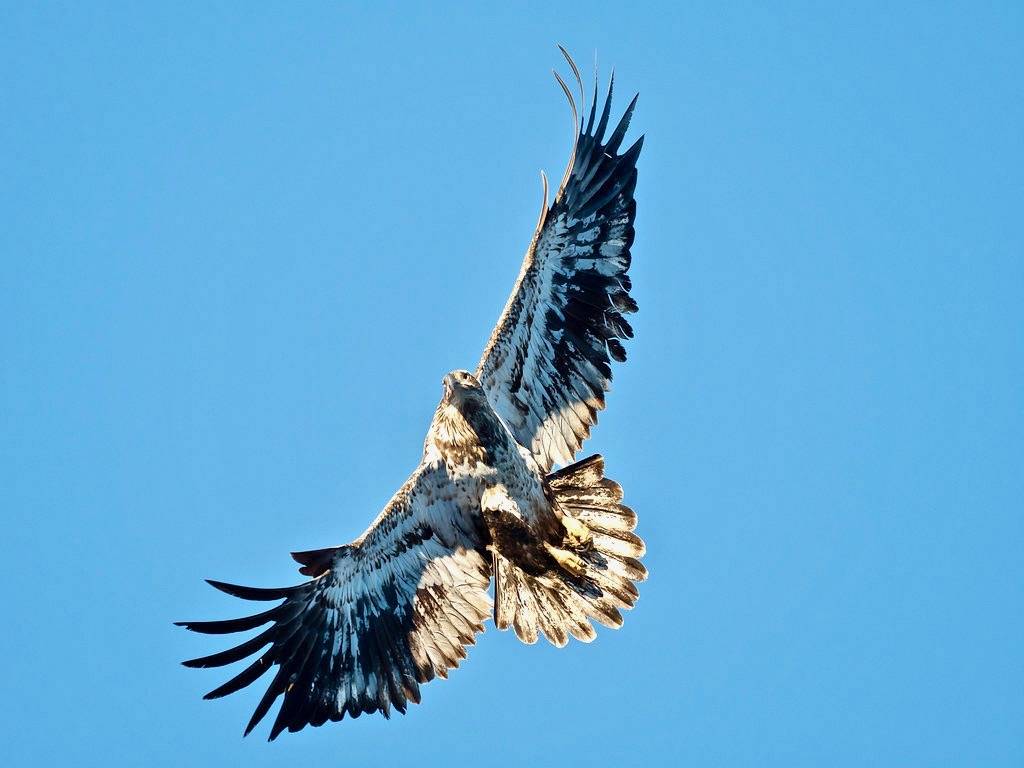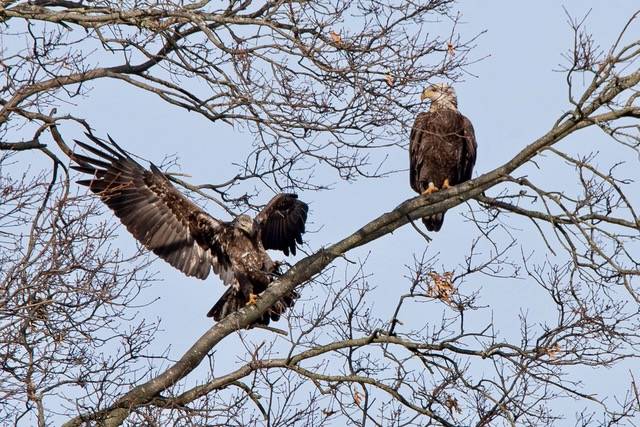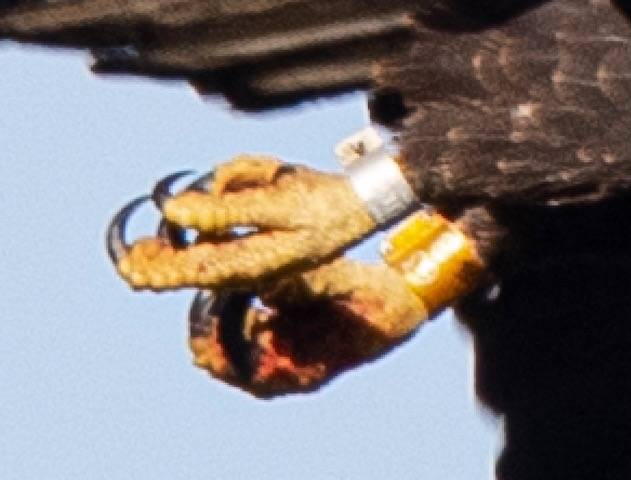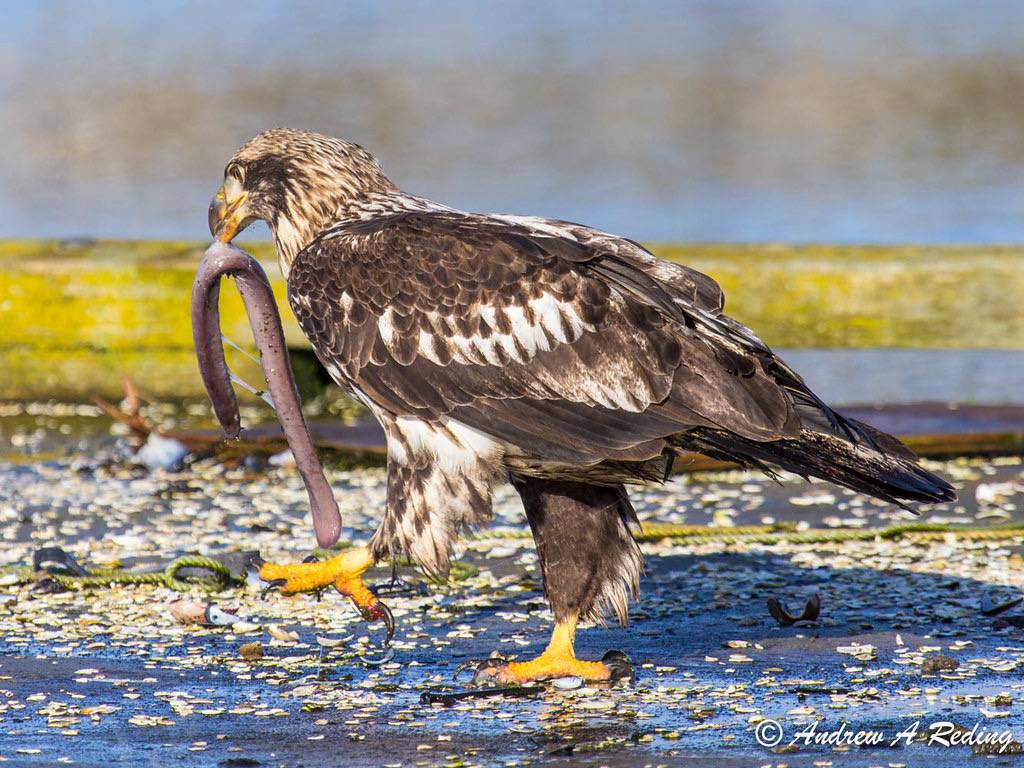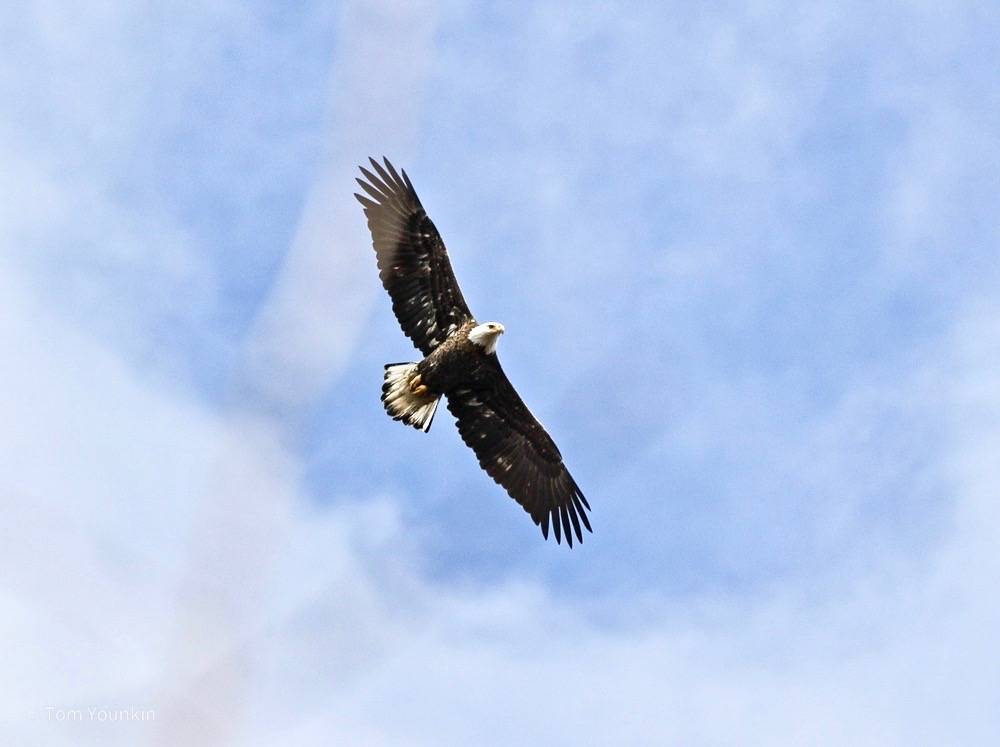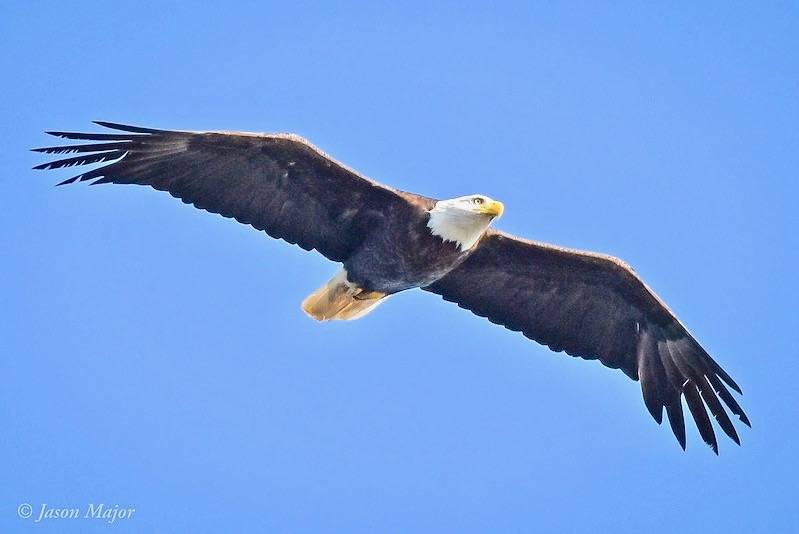Bald Eagle
Records since 2002 indicated that only a few immature Bald Eagles had ever been seen at Salter Grove, always flying far overhead. All that changed in 2021. In August, an adult perched for several minutes in a large black oak near the parking lot. In December three second-year, two third-year, and two near-adult Bald Eagles were observed resting on the rocks and tall trees around North Cove.
It was possible to distinguish between the differently-aged birds because it takes five years for the brown juvenile plumage to change stepwise into the distinctive adult plumage.
One explanation for the sudden appearance of so many eagles at Salter Grove may be related to the unusual abundance of Atlantic Menhaden in North Cove towards the end of 2021. Numerous seagulls had been feasting on this fish for weeks. There was such a surfeit that gulls did not bother to steal food from one another. The eagles must also have been well-fed because they totally ignored nearby seagulls gorging on fish.
Despite its noble appearance, the Bald Eagle is well known to be a kleptoparasite, stealing fish from ospreys and gulls when possible. This habit prompted Benjamin Franklin to observe that it "...is a bird of bad moral character. He does not get his living honestly..."
The Bald Eagle is found throughout North America south to northern Mexico. Its breeding and wintering habitats tend to be near large open bodies of water with plentiful fish where there are also large trees suitable for nesting or roosting. It prefers to feed on fish but will opportunistically hunt waterbirds, mammals, reptiles, and feast on carrion when available.
Everything about the Bald Eagle is large. Its wingspan ranges from 6 to 8 ft. Its body weight ranges from 7 to 12 lb. Northern birds are larger than southern birds and females tend to be about 25% larger than males. Once established in a very tall tree, a successful nest will be reinforced each subsequent year by the same breeding pair. The largest nest recorded is from Florida. It was 9.5 ft across and 20 ft deep, weighing in at 6,000 lb.
Habitat destruction, hunting pressure and the large-scale usage of the pesticide DDT in the 1940's and 1950's brought the Bald Eagle to the brink of extinction in the 1970's. If not for the strong and timely conservation measures taken, this national emblem would now only be seen on coins and official seals of the federal government. Because of its impressive recovery, it has been removed from the endangered species list in 2007. Current studies of Bald Eagles in the U.S. and Canada all report an increase in numbers within the last two decades.
The Bald Eagle is considered sacred in various Native American cultures. Its feathers, as well as other body parts were used in religious and spiritual ceremonies to commemorate or celebrate important events.

